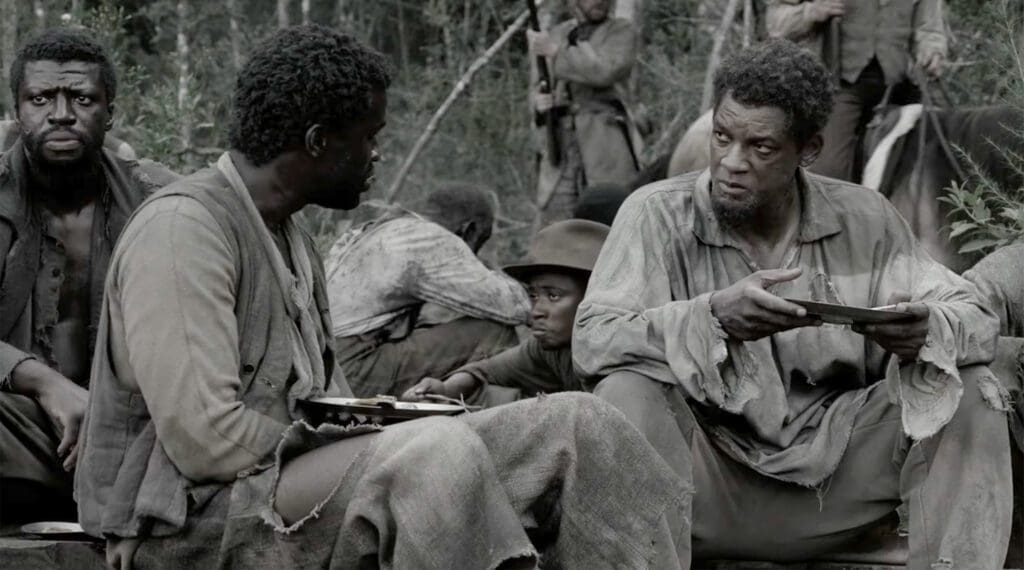We discuss the ending of the Apple TV+ film Emancipation, which will contain spoilers.
A brutal and uncompromising historical retelling of Emancipation is based on the true story of “Gordan,” also called “Whipped Peter.” He was an enslaved man who became famous because of the infamous photograph taken of him when he escaped a slavery camp helping build a railroad for the Confederate Army. As the story goes, Peter traveled for ten days and over forty miles, chased by Confederate militia and running through a maze of dangerous swamps in the Bayou.
In the film, Peter was taken from his family. It separated him from his children and wife Dodienne (Black Box‘s Charmaine Bingwa) a few weeks prior. He ends up in a Confederate army to help with manual labor in the fight against the Union. Chasing Peter is Fassel (Ben Foster), an evil enforcer who thinks a higher authority is guiding his hands. His job is to chase down runaways and make an example of them.
Eventually, Peter’s chaser was shot and killed by members of the Union army. As he was treated for his wounds, he was given an unusual request. A man named William D. McPherson, a photographer based out of New Orleans, and his partner, Oliver, took pictures of his scarred back to document the atrocities of slavery.
Emancipation ending explained – how does Peter reunite with his family?
Emancipation ends with Peter being reunited with his family. The 54th Massachusetts Infantry Regiment rescued Peter but then was forced to join the Army (or work in the fields) until the issue of the war was over. After winning a battle, Peter and his infantry arrive at John Lyons’s 3,000-acre Louisiana cotton plantation.
The enslaved men and women are freed, but Peter still searches for his wife and children. After a few minutes, he spots them and runs into his wife’s arms and three children. “All persons held as slaves… shall be free,” said Abraham Lincoln and officially ended slavery. That spurred over 400,000 black men and women to escape to freedom. Om June 19th, 1865, over 4 million enslaved people were now recognized as free. (Areas in Texas still held people as enslaved people and were freed, leading to the nationally recognized holiday of Juneteenth).
“Whipped Peter” was credited with helping turn the opinion that enslaved men and women were being treated humanely. Per the Smithsonian’s National Portrait Gallery, “This photograph was used by abolitionists to provide compelling visual proof of slavery’s brutality.” Up to that point, some needed visual proof, particularly up north, that enslaved people had been treated poorly. As if being forced to work against your will wasn’t a sign in the first place. This was the first hard evidence “of slavery’s brutality,” and “(this) photograph should be multiplied by 100,000 and scattered over the States. It tells the story in a way that even Mrs. [Harriet Beecher] Stowe can not approach because it tells the story to the eye.”
It should also be noted a photo of Wilson Chinn, who was pictured in chains, also highlighted the disturbing images of slavery. The New York Times notes that both “serve as two of the earliest and most dramatic examples of how the newborn medium of photography could change the course of history.”
What did you think of the Apple TV+ film ending of Emancipation? Comment below.



